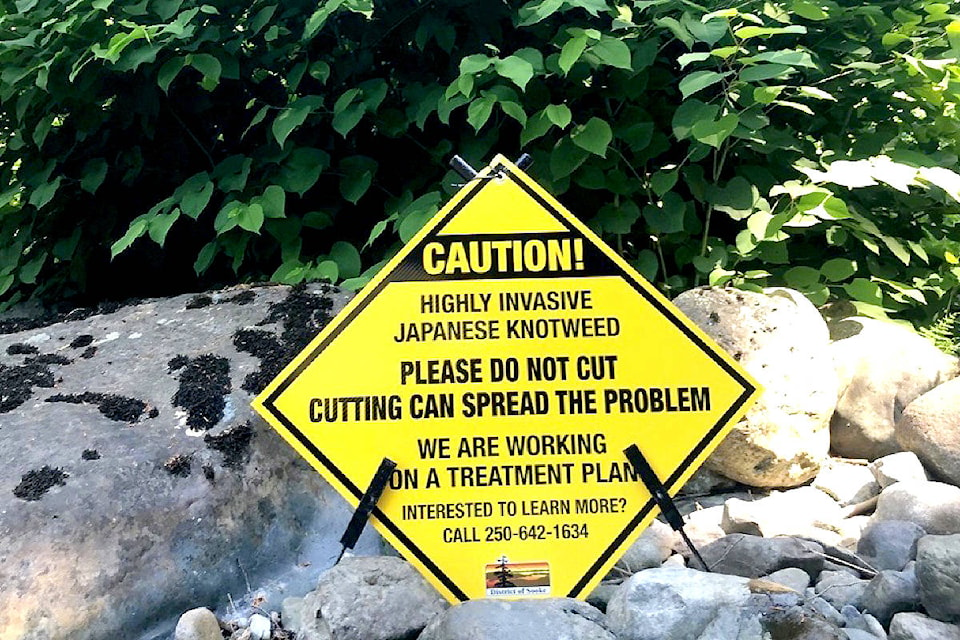It can penetrate through a metre of concrete, live above ground or in the water and, if you try to kill it, it will reproduce even more aggressively, even if you leave even a tiny scrap of the original organism behind.
If that sounds like something from a horror movie, you might not be far off.
Sooke council heard all about this invader at its last meeting when municipal staff reported an infestation of Japanese knotweed along the Sooke River and Charters Creek.
Councillors heard the highly aggressive invasive species is posing a significant environmental threat to salmon populations and to the river ecosystems.
The plant species is so difficult to manage that, according to the staff report, parks staff are at a loss on how to deal with it.
RELATED: Invasive species a problem everywhere
“It’s a plant that can be treated with herbicide when it isn’t close to a water source, but this outbreak is all along the Sooke River, so the usual use of herbicide isn’t possible for fear that we could do damage to the waterway,” said Environmental Services staff.
“And digging it up or cutting it down won’t work. In fact, that’s the last thing you want to do.”
The reasons that the usual removal methods won’t work are related to the nature of the plant.
Unlike plants like Scotch broom, Japanese knotweed does not rely solely on seeds to propagate, although each branch of knotweed has about 100,000 seeds. The plant will also reproduce if any part of the root system is left behind or even if a sliver of the original plant is allowed to be left on the ground.
“This is a monster plant,” said Jennifer Grenz, program manager at the Invasive Species Council of Metro Vancouver, where knotweed is a serious problem.
“The Ministry of Transportation takes knotweed extremely seriously. We’ve had examples of plants where we’re pretty sure they’ve have gone under four lanes of the highway and have popped up on the other side.”
Research has shown that a single plant’s root system can extend to a radius of 20 meters and go to a depth of three meters.
But in Vancouver, one attempt to remove the plant by excavating the ground to a depth of three meters resulted in its return the next year, twice its original size.
The destructive force of the plant is such that in the United Kingdom the presence of knotweed can make it impossible to hold a mortgage on a home near an infested property.
ALSO READ: Not all invasive species are plants
In Sooke, the district received reports of patches of knotweed on the banks and in the bed of the Sooke River in 2018.
Staff conducted an informal survey as a result of this report to record the extent of its spread. It was found that Japanese knotweed could be found from the mouth of Charters Creek, along the river in patches, and to the estuary at Sooke’s Sunriver Nature Park.
Charters Creek appears to be the epicentre of the outbreaks where a root mass up to 100 square meters in size is constricting the channel, redirecting flow at the mouth of the creek, creating a physical barrier to spawning salmon and increasing the potential for flooding.
Parks staff report that they are working with the Capital Regional District and the T’Souke Nation to come up with a plan of attack to deal with the invader.
The last thing that they want, however, is for well-meaning volunteers to go out and try to eradicate the plant on their own. That sort of action would almost certainly spread the plant significantly and make the problem worse.
mailto:tim.collins@sookenewsmirror.com
Like us on Facebook and follow us on Twitter
